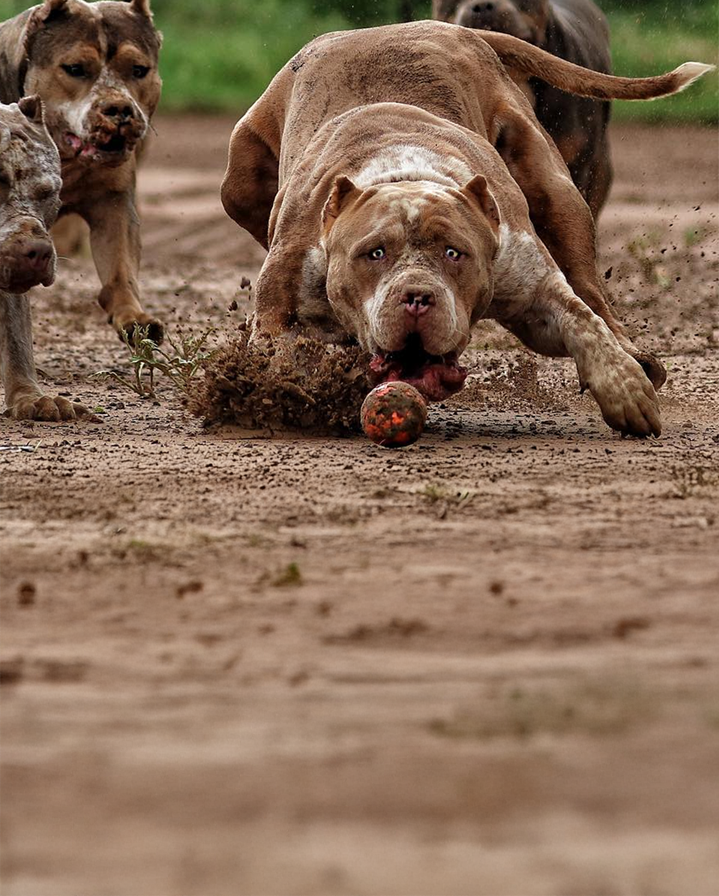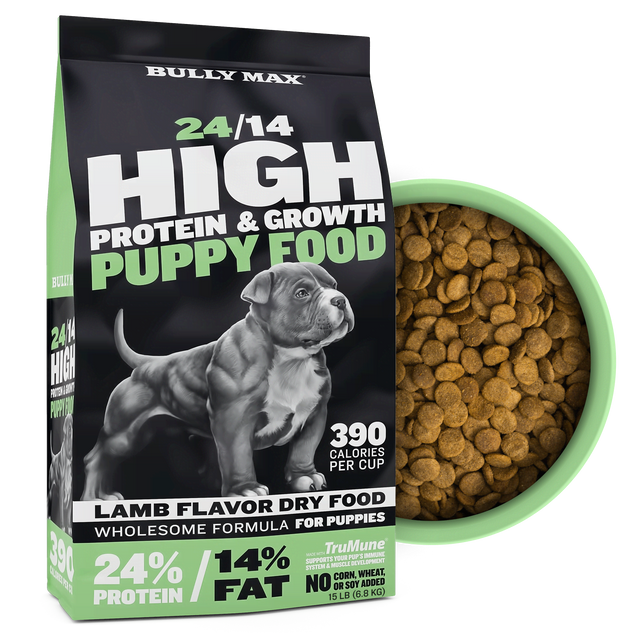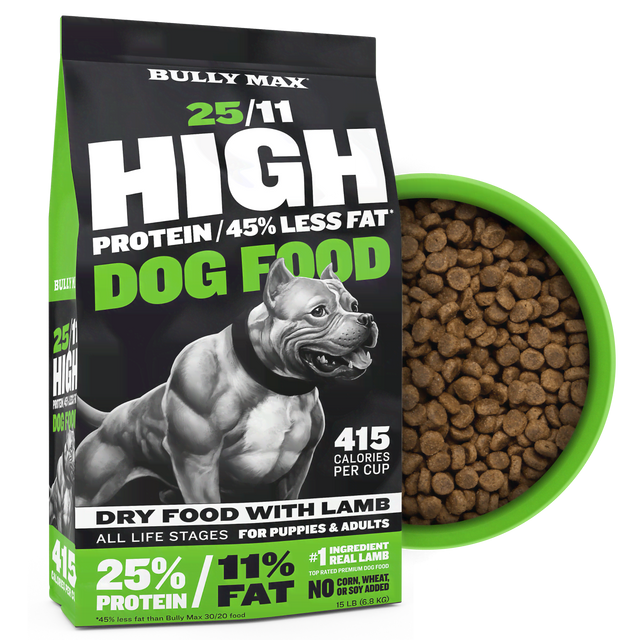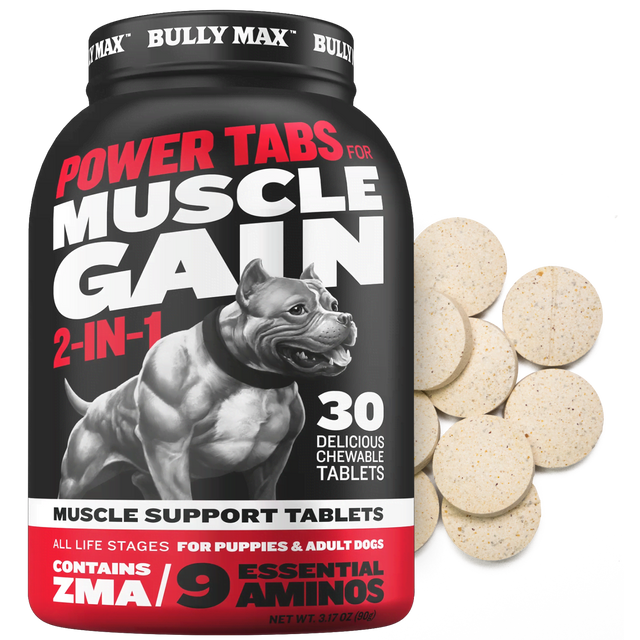English Bulldog - Personality Traits and Breed Information
In years past, Bulldogs have been stereotyped as unpredictable and aggressive bully breed. Fortunately with the advent of responsible pet ownership campaigns, it is now widely known that genetics itself is only one of the many factors which affects a dog’s behavior. Many would now agree that Bulldogs, particularly English Bulldogs, are gentle, predictable and calm dogs.
If you have an English Bulldog or are contemplating on having one, this article is definitely for you. Here is everything you need to know about the English Bulldog.

History and Origin of the English Bulldog
The English Bulldog, also known as the British Bulldog, originated in England in the 13th century. The dog was originally bred for the blood sport of bull-baiting wherein a bull is staked for a pack of dogs to subdue. In fact, the etymology of the term bulldog comes from bull-baiting itself. This brutal sport was a widely known form of entertainment during that era and the breed was commonly used for this due to their massive and powerful jaws.
In 1835, England officially banned blood sports with animals. However, this did not totally stop illegal blood sports activities. It took several decades to completely stop bull-baiting and the breeding of Bulldogs for this blood sport. Breed enthusiasts during this period began converting these dogs from fighters to companion animals. In time, the English Bulldog had become a gentle and loving family dog in the country. By 1886, the breed was finally recognized by the AKC.
English Bulldog Breed Information
About the Breed
The English Bulldog is a medium set dog with a stocky and low-swung body, a big, flat-faced head, wide shoulders, and short, sturdy limbs. Pronounced characteristics of this breed include the heavy wrinkles covering most of the face and undershot mouth completing their iconic facial appearance. The colors of the English Bulldog may vary from red, white, fawn, fallow and their combinations. Their coats are short and smooth. The standard sizes for mature males and females are about 50 and 40 pounds, respectively. The standard English Bulldog stands at 14-15 inches.
English Bulldog Temperament and Personality
The English Bulldog has many family-oriented traits which make them an excellent pet. They are gentle dogs with low-energy levels who enjoy spending time with the family, children and other dogs.
English Bulldogs Personality
The English Bulldog is gentle, affectionate, loyal and friendly. They love being the center of attention, especially during their younger years. The breed is generally quiet and will only bark to alert their owners which makes them good apartment pets. They equally enjoy playtime and lazy days by the couch, as well. The English Bulldog has a certain level of stubbornness at times which most owners can relate to. This willfulness may sometimes be mistaken for their innate independence.
Are English Bulldogs Good With Other Dogs?
English Bulldogs are generally friendly towards other dogs, especially to those they are socialized well with. They are expected to get along well with and tolerate other dogs in the same household. However, they might be cautious of unfamiliar dogs so it is important to introduce them gradually with patience.
For more detailed guidance on helping your English Bulldog become comfortable around other dogs, check out our comprehensive guide on puppy socialization.
Are English Bulldogs Good Family Dogs?
English Bulldogs are excellent family dogs due to their loyal and gentle nature. They are a very patient breed which makes them tolerant with children including toddlers. As with all dog breeds, playtime supervision between an English Bulldog and children is important to make sure everyone is safe and happy.
Are English Bulldogs Smart?
The breed ranks 77 out of 79 based on Coren Stanley's “The Intelligence of Dogs”. The methods used in this experiment focused on working and obedience intelligence. While “smart” is not the best term to describe an English Bulldog, it does not mean that the breed is not intelligent in their own ways. They are an independent breed and this virtue requires intelligence.
Is it Hard to Train a English Bulldog?
English Bulldogs are expected to be more difficult to train compared to other breeds. This is particularly because they are generally stubborn and lazy. However, with enough perseverance and positive reinforcement, training is definitely doable. Patience and consistency are needed for the breed to master basic obedience training. Moreover, they are not expected to master advanced training like complicated tricks or agility workout.
Can English Bulldogs Swim?
English Bulldogs cannot swim. Due to their stout body, staying afloat in water is almost impossible. With this in mind, it is important to keep them away from pools or bodies of water. There are life vests available catered to bulldogs but this is not an assurance and strict supervision should always be imposed to English Bulldogs in pools or beaches.
English Bulldog Health and Care
The English Bulldog belongs to the group known as brachycephalic breeds. Brachy means shortened, while cephalic means head: thus, shortened head. Because of their head conformation, they are predisposed to a variety of health conditions. Their other conditions are attributed to their skin and body conformation.
English Bulldog Common Health Issues
BOAS and Heat Stroke
Brachycephalic obstructive airway syndrome (BOAS) is a respiratory condition common in flat-faced breeds like English Bulldogs, characterized by upper airway abnormalities that compromise breathing. Symptoms include labored breathing, snoring, exercise intolerance, and occasional fainting, which are more pronounced in hot and humid weather.
Dogs with BOAS are at high risk of heat stroke, an emergency condition with severe signs like heavy panting, drooling, vomiting, and potential collapse. Diagnosis involves physical examination and respiratory tract evaluation under anesthesia, with treatment ranging from medical management to surgery depending on severity.
For English Bulldogs, the survival rate of heat stroke critically depends on rapid veterinary intervention. Owners must be vigilant about recognizing early signs and understanding the breed's predisposition to this life-threatening condition.
Skin Fold Dermatitis and Ear Infections
English Bulldogs are very prone to several dermatological conditions, most commonly skin fold dermatitis and ear infections. These are due to their anatomical tendencies to have facial skin folds and narrower ear canals. Skin fold dermatitis and ear infections are typically caused by bacteria, yeast, or their combinations.
Reddish, itchy and smelly skin particularly on the folds are signs of skin fold dermatitis. The offensive odor may not go away even after bathing. The folds may also have sticky and yellowish discharge which may be painful when cleaned. Meanwhile, ear infections manifest as head shaking, ear scratching, and inflamed smelly ears which may have discharges. The ears are also usually painful when manipulated which may cause whimpering.
A veterinarian can easily diagnose these issues upon physical examination. Further testing, such as skin and ear cytologies, may be done to determine the specific types of infections. These conditions are treated with oral (e.g. oral antibiotics, anti-pruritics) and topical medications (e.g. shampoos, ear drops).
Skin Allergies and Interdigital Cysts
English Bulldogs are prone to skin allergies and interdigital cysts, both of which can cause significant discomfort. Skin allergies manifest as itchiness, hives, facial swelling, and red, inflamed skin, often accompanied by sneezing and excessive licking. Interdigital cysts appear as painful, reddish bumps between the toes that may rupture and discharge clear or bloody fluid, causing the dog to lick, chew, and potentially limp.
Diagnosis requires a thorough physical examination and potentially additional tests to identify underlying causes. Treatment varies from anti-inflammatory medications and special diets for allergies to topical management or antibiotics for interdigital cysts, depending on the severity and specific condition.
Prompt veterinary attention is crucial to manage these uncomfortable and potentially recurring health issues in English Bulldogs.
Entropion and Corneal Ulcers
Entropion is an inherited eye condition in English Bulldogs where the eyelids roll inward, causing eyelashes to continuously rub against the cornea. This condition is closely related to the breed's characteristic skin and skull structure and can lead to corneal ulcers, eye irritation, and ocular hyperpigmentation.
Dogs with entropion typically exhibit symptoms like squinting, excessive tearing, and mucoid discharge, often affecting both eyes. Corneal ulcers present as cloudy eyes with redness, light sensitivity, and potential discharge. Veterinarians usually diagnose this condition in puppies under one year old through a comprehensive eye examination.
Treatment primarily involves surgical correction, removing a section of skin to reverse the eyelid's inward rolling. Corneal ulcers are treated with specialized stains for diagnosis and ophthalmic drops to prevent infection and manage pain, with severe cases potentially requiring surgical intervention.
Cherry Eye
Cherry eye, medically known as prolapsed nictitating membrane gland, is a condition where a tear-producing gland inside the eye protrudes. This condition is irritating and may cause dry eyes in dogs. The exact cause of this condition is unknown but studies have determined that Bulldogs are predisposed to Cherry eyes.
A smooth, round, red or pink mass in the inner corner of the eye is suggestive of the disorder. It may come and go in mild forms of the disease. It may also present in both eyes. Affected dogs may have excessive eye secretions. They may also try to paw their eyes.
An eye examination by a veterinarian is enough to determine the disorder. Surgery is the treatment of choice.
Grooming and Nail Care
With English Bulldogs, professional grooming services are not always required. Basic grooming for this breed can be accomplished at home.
How Often do English Bulldogs Need to be Groomed?
- Brushing - English Bulldogs will only require brushing a couple of times a week to keep their coats smooth and shiny. Brushing will also help improve blood flow in the skin, thus, will promote new hair growth. A gentle medium-bristle brush, a rubber grooming mitt or tool, or a hound glove is recommended for brushing the coat.
- Bathing - English Bulldogs should be bathed once a week to every other week, with special attention given to their skin folds. Skin folds along the face must always be kept clean and dry. A gentle shampoo, like oatmeal-based shampoos, is recommended for this breed.
- Ear Cleaning - English Bulldogs need their ears cleaned a couple of times a week to prevent ear infections. There are over-the-counter ear cleansers available in veterinary clinics and pet shops. Prepare lots of cottons or gauzes to perform this and make sure to pat the inner and outer ears dry afterwards.
- Skin Fold Cleaning - Skin folds need meticulous attention as these can catch infections easily. Hypoallergenic, unscented wipes are recommended to clean the facial folds. Make sure to pat dry the folds with a clean cloth after cleaning.
- Anal Gland Expression - Not all dogs will need this but it is important to assess if your English Bulldog has a full anal gland. Scooting is a common behavior seen in dogs with full anal glands. It is best to bring the dog to a professional groomer or the veterinary clinic if one suspects that anal gland expression is needed. If an English Bulldog cannot relieve his anal glands, assessment and expression is recommended every 4-8 weeks.
- Hair Cut - English Bulldogs typically don’t need hair cuts unless recommended by a veterinarian.
How Often Should You Cut Bulldogs Nails?
For indoor English Bulldogs, nail trimming is recommended to be done every two weeks. For dogs spending a significant amount of time walking and playing outside, the nails can be trimmed every four to six weeks. The nails of an English Bulldog must always be kept short and as a rule of thumb, nails clacking on the floor means a nail trim is needed. You can use nail clippers or nail grinders to trim your English Bulldog’s nails.
Exercise Needs
English Bulldogs have low energy levels which require only around 30 minutes of exercise a day. They tolerate short 15-minute walks when it’s cool outside, particularly early morning or at night. They also enjoy games such as tug-of-war and ball games. It is important to provide water at all times and to keep exercise sessions short to avoid overexertion.
When walking outside is not possible, English Bulldogs also enjoy indoor games. They love mental games such as hide-and-seek and interactive toys. They are very food-driven so it is a good idea to choose toys that can be stuffed with treats.
English Bulldog Size and Coat Color
Size
The English Bulldog is a medium-sized breed. According to AKC, the standard English Bulldog stands at a height of 14-15 inches, for both sexes. The male English Bulldog weighs at an average of 50 pounds while the female English Bulldogs weighs at an average of 40 pounds.
The increase in height of the English Bulldog usually halts at their twelfth month of age. However, increases in weight and chest girth are still expected until they reach their second year. With regard to growth, one important clue that you could look for is the size of their paws. Oversized paws next to their legs and body means that your English Bulldog is still growing.
Coat Color
English Bulldogs come in a stunning variety of coat colors, ranging from common shades like fawn and red to rare hues like merle, lilac, and chocolate, as shown in the infographic below.

English Bulldog Breed Organizations
Whether you are contemplating on having an English Bulldog or you already have one, it’s best to do your research. Here is a list for you to check out.
- The Bulldog Club of America
- The Bulldog Breed Council
- Adopt A Bull
- Bulldogs World
- English Bulldog News
Conclusion
The English Bulldog is a gentle, loyal and friendly breed which makes it a great family pet. While this dog doesn't require special grooming or vigorous exercise, the breed is expected to have more frequent veterinary visits than the average dog. Nonetheless, English Bulldogs will have a good life quality with proper husbandry, training and health care.
Do you own an English Bulldog? Share your experience with this adorable breed by leaving us a comment below.









